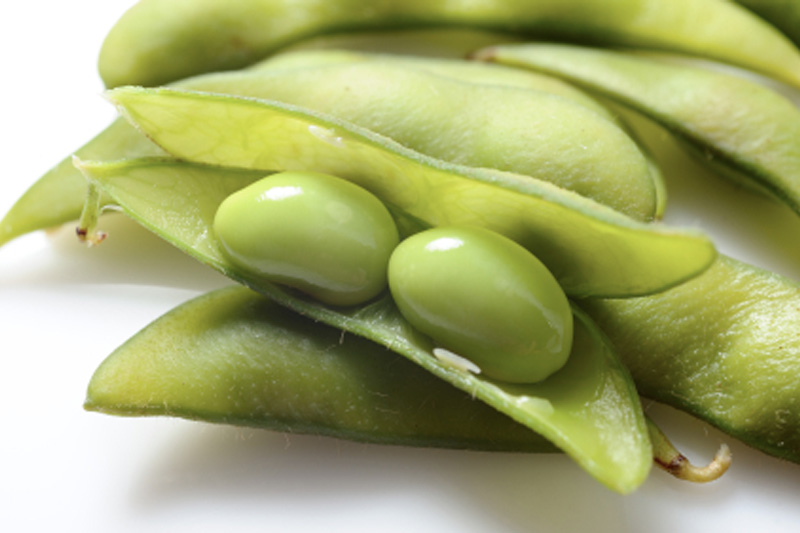Investing.com - U.S. soybean futures rose for the third consecutive session on Wednesday, supported by strong gains in the soy oil market amid talk of strong overseas demand.
On the Chicago Mercantile Exchange, US soybeans for July delivery touched an intraday peak of $9.8788 a bushel, the most since April 30, before trading at $9.8712 during U.S. morning hours, up 1.92 cents, or 0.2%. A day earlier, soybean prices tacked on 8.4 cents, or 0.87%, to end at $9.8460.
A sharp rally in soybean oil futures over the past few sessions boosted prices of the oilseed. Prices of the oil are up nearly 6% so far this week.
Meanwhile, US corn for July delivery inched up 1.52 cents, or 0.42%, to trade at $3.6412 a bushel. On Tuesday, corn fell to $3.5560, a level not seen since October 27, before turning higher to close at $3.6260, up 1.4 cents, or 0.42%.
Corn prices have been under pressure in recent weeks amid indications of rapid planting progress in the U.S. Midwest.
According to the U.S. Department of Agriculture, approximately 55% of the corn crop was planted as of May 3, up from 19% in the preceding week. Nearly 28% of the crop was planted during the same week a year earlier, while the five-year average for this time of year is 38%.
Elsewhere on the Chicago Board of Trade, US wheat for July delivery advanced 2.43 cents, or 0.52%, to trade at $4.6962 a bushel. Futures slumped to a contract-low of $4.6060 on Tuesday, before settling at $4.6640, down 6.2 cents, or 1.32%.
Gains were expected to remain limited as dry weather conditions in key U.S. wheat-growing states was likely to benefit crop conditions.
Nearly 75% of the spring wheat crop was planted as of May 3, up from 55% in the preceding week, according to the USDA. Only 25% of the crop was planted in the same week a year earlier, while the five-year average for this time of year is 40%.
The agency also said that the U.S. winter wheat crop was rated 43% good to excellent as of last week, up from 42% in the preceding week.
Corn is the biggest U.S. crop, followed by soybeans, government figures show. Wheat was fourth, behind hay.
- English (UK)
- English (India)
- English (Canada)
- English (Australia)
- English (South Africa)
- English (Philippines)
- English (Nigeria)
- Deutsch
- Español (España)
- Español (México)
- Français
- Italiano
- Nederlands
- Português (Portugal)
- Polski
- Português (Brasil)
- Русский
- Türkçe
- العربية
- Ελληνικά
- Svenska
- Suomi
- עברית
- 日本語
- 한국어
- 简体中文
- 繁體中文
- Bahasa Indonesia
- Bahasa Melayu
- ไทย
- Tiếng Việt
- हिंदी
U.S. soybean futures rise for 3rd day as soy oil extends rally
Published 05/06/2015, 06:23 AM
U.S. soybean futures rise for 3rd day as soy oil extends rally

Latest comments
Install Our App
Risk Disclosure: Trading in financial instruments and/or cryptocurrencies involves high risks including the risk of losing some, or all, of your investment amount, and may not be suitable for all investors. Prices of cryptocurrencies are extremely volatile and may be affected by external factors such as financial, regulatory or political events. Trading on margin increases the financial risks.
Before deciding to trade in financial instrument or cryptocurrencies you should be fully informed of the risks and costs associated with trading the financial markets, carefully consider your investment objectives, level of experience, and risk appetite, and seek professional advice where needed.
Fusion Media would like to remind you that the data contained in this website is not necessarily real-time nor accurate. The data and prices on the website are not necessarily provided by any market or exchange, but may be provided by market makers, and so prices may not be accurate and may differ from the actual price at any given market, meaning prices are indicative and not appropriate for trading purposes. Fusion Media and any provider of the data contained in this website will not accept liability for any loss or damage as a result of your trading, or your reliance on the information contained within this website.
It is prohibited to use, store, reproduce, display, modify, transmit or distribute the data contained in this website without the explicit prior written permission of Fusion Media and/or the data provider. All intellectual property rights are reserved by the providers and/or the exchange providing the data contained in this website.
Fusion Media may be compensated by the advertisers that appear on the website, based on your interaction with the advertisements or advertisers.
Before deciding to trade in financial instrument or cryptocurrencies you should be fully informed of the risks and costs associated with trading the financial markets, carefully consider your investment objectives, level of experience, and risk appetite, and seek professional advice where needed.
Fusion Media would like to remind you that the data contained in this website is not necessarily real-time nor accurate. The data and prices on the website are not necessarily provided by any market or exchange, but may be provided by market makers, and so prices may not be accurate and may differ from the actual price at any given market, meaning prices are indicative and not appropriate for trading purposes. Fusion Media and any provider of the data contained in this website will not accept liability for any loss or damage as a result of your trading, or your reliance on the information contained within this website.
It is prohibited to use, store, reproduce, display, modify, transmit or distribute the data contained in this website without the explicit prior written permission of Fusion Media and/or the data provider. All intellectual property rights are reserved by the providers and/or the exchange providing the data contained in this website.
Fusion Media may be compensated by the advertisers that appear on the website, based on your interaction with the advertisements or advertisers.
© 2007-2024 - Fusion Media Limited. All Rights Reserved.